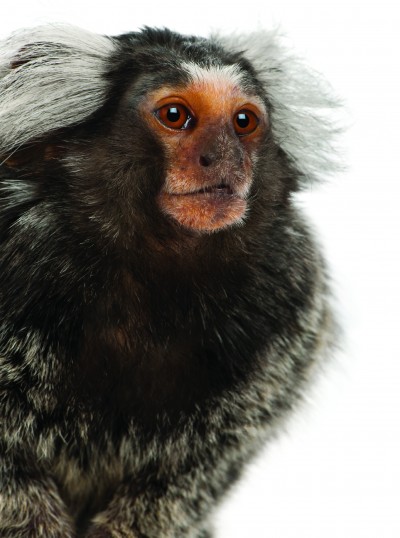
Animal Aid has uncovered two shocking charity-funded experiments that involved monkeys being brain-damaged through the use of a toxic chemical called MPTP, overdosed with a Parkinson’s disease (PD) drug to induce debilitating side effects, and given the street drug ecstasy, or a derivative. Eleven marmoset monkeys were used in all, six of whom had previously been subjected to similar experiments. The studies were conducted in Canada, but co-funded by the Cure Parkinson’s Trust, a UK charity that fundraises in this country.
Over many years of monitoring vivisection, this is the first time Animal Aid has encountered monkeys being re-used in such harmful research. The Home Office has confirmed that experiments in which monkeys are brain-damaged with MPTP fall into the highest category of severity. It has previously stated that brain-damaging monkeys with MPTP has ‘devastating welfare costs’ for the animals involved and serious questions arise as to whether the re-use of primates in such harmful experiments would be permitted in the UK, or in the other EU countries governed by the same European directive.
Animal suffering
- In both experiments, the monkeys were injected daily for five days with the brain-damaging chemical until they developed severe PD like symptoms. Poisoning marmosets in this way can leave them severely disabled.
- For the next 12 weeks, the monkeys’ parkinsonian symptoms were left to develop fully and stabilise.
- Afterwards, over at least 30 days, the monkeys were administered such high doses of a Parkinson’s drug that they developed distressing side effects, including uncontrolled movements and psychotic behaviour that could include hallucinations.
- On days of ‘behavioural assessment’, some of the monkeys received the Parkinson’s drug in combination with an experimental drug. They were then confined in cages, alone, for six hours so that their ‘movement disorders’ and other disabling symptoms could be recorded.
- One of the experiments also involved killing rats by decapitation after exposure to carbon dioxide so that they could be used as a source of brain tissue.
Faulty science
- Ecstasy, used in one of the experiments, could never be used as a therapy for Parkinson’s because of its toxic effect on the brain and psychoactive nature. Recognised side effects of ecstasy include anxiety, paranoia, depression, exhaustion, dizziness and insomnia.
- The ecstasy derivative used by the researchers in the other experiment worsened the monkeys’ psychotic behaviour when it was given to them in higher doses. Drugs of this same class have already failed to show any benefit when given to human patients, despite being very effective at treating marmoset ‘models’ of Parkinson’s.
- There are fundamental scientific problems with using monkeys as ‘models’ of PD. Monkeys do not get PD, and the symptoms induced in them by brain-poisoning fail to replicate key features of the disease. For example:
– Brain-poisoned monkeys gradually recover, whereas PD is a degenerative disease.
– Monkeys do not develop Lewy bodies. These are clumps of abnormal protein that are a key hallmark of the disease found in the brains of human patients.
– Marmosets do not suffer from rest tremor, which is an important symptom experienced by PD patients.
– Genetic, age-related and environmental factors cannot be measured in animals, nor can those relating to cognition and emotion.
- Dr Marius Maxwell, an Oxford, Cambridge and Harvard-trained neurosurgeon, has strongly criticised, on scientific grounds, the use of brain-poisoned monkeys as a ‘model’ for PD research. He states: ‘There is no evidence to suggest their overall predictive concordance to human PD treatment…would exceed the best case 50:50 coin toss probability.’
Please click here to read an in-depth analysis of the experiment.
